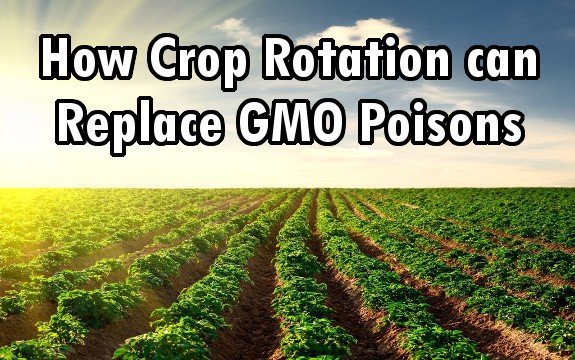How Traditional & Natural Farming CAN Surpass GMOs

 Genetically modified foods are grown under the mono-cropping agricultural model. Mono-cropping causes increased plant disease, the doubling over of pests, and the intensive application of commercial fertilizers, herbicides, pesticides, and fungicides to grow anything. It also relies on heavily mechanized farming methods and requires lots of water -a precious commodity. Our world is now covered with GMO soy, rice, corn, and other ‘staple’ foods grown in a mono-crop environment. but this isn’t the only way. Crop rotation has been used for centuries as a more viable and effective way of farming, and it doesn’t require GMO seed.
Genetically modified foods are grown under the mono-cropping agricultural model. Mono-cropping causes increased plant disease, the doubling over of pests, and the intensive application of commercial fertilizers, herbicides, pesticides, and fungicides to grow anything. It also relies on heavily mechanized farming methods and requires lots of water -a precious commodity. Our world is now covered with GMO soy, rice, corn, and other ‘staple’ foods grown in a mono-crop environment. but this isn’t the only way. Crop rotation has been used for centuries as a more viable and effective way of farming, and it doesn’t require GMO seed.
Large scale, commercially driven agriculture is poisoning the planet. It has no regard for public health, but feeds the bottom line of several small companies that have monopolized the agricultural landscape.
Crop rotation has been practiced since at least 6000 BC. Our planet has a long history of feeding its people – even with drought, floods, and other weather anomalies – without GMOs. The Roman Empire, was in fact, very successful in feeding its growing population utilizing crop rotation.
Crop rotation utilizes a systematic approach to planting one variety of vegetables or plants one year, and a different crop the next. As Penn State’s Agricultural Science school says, “A well-planned crop-rotation system can help producers avoid many of the problems associated with conservation tillage, such as increased soil compaction, perennial weeds, plant diseases, and slow early season growth.”
Reasons to Practice Crop Rotation
There are very simple reasons for practicing crop rotation:
- Crop rotation keeps the soil fertile without having to use commercial fertilizers. Planting different plants helps to balance soil qualities, and some plants will deplete phosphorous and nitrogen, and other plants will restore these important nutrients.
- It improves harvest quantities and the quality of the food harvested. “The yield benefits of crop rotations are often overlooked. For example, corn following soybeans will often yield 5 to 20 percent more than continuous corn on the same farm. Corn following a hay crop will yield as much as or more than corn following soybeans. The effects of crop rotations on the grain yield of corn in a crop rotation study at Penn State are shown in Table 1. Yield responses to crop rotation of 15 percent for soybeans and 10 percent for wheat are common. Crop rotations also can decrease the cost of crop production.”
- Crop rotation reduces pests naturally. “Take potatoes, for example. In the course of a season, the fungi that cause scabby skin patches may proliferate, along with root-killing verticillium fungi (which also damage tomatoes and eggplant) and tiny nematodes that injure potatoes. If you plant potatoes again in the same place, these pathogens will be ready and waiting to sabotage the crop. “
There is ample evidence that GMOs are NOT feeding the world better than non-GMOs, as Monsanto, Bayer, Syngenta, and other biotech companies like to claim.
“University of Canterbury (UC) researchers have found that the GM strategy used in North American staple crop production is limiting yields and increasing pesticide use compared to non-GM farming in Western Europe.”
